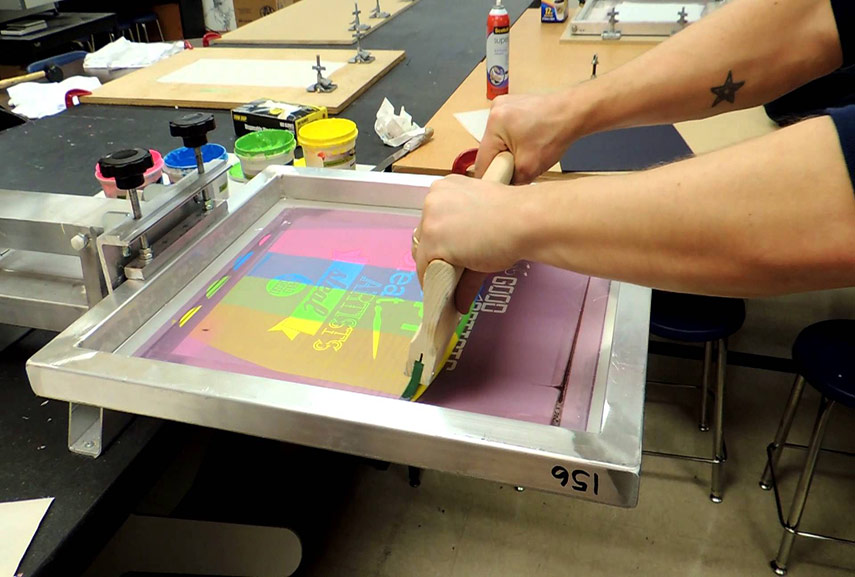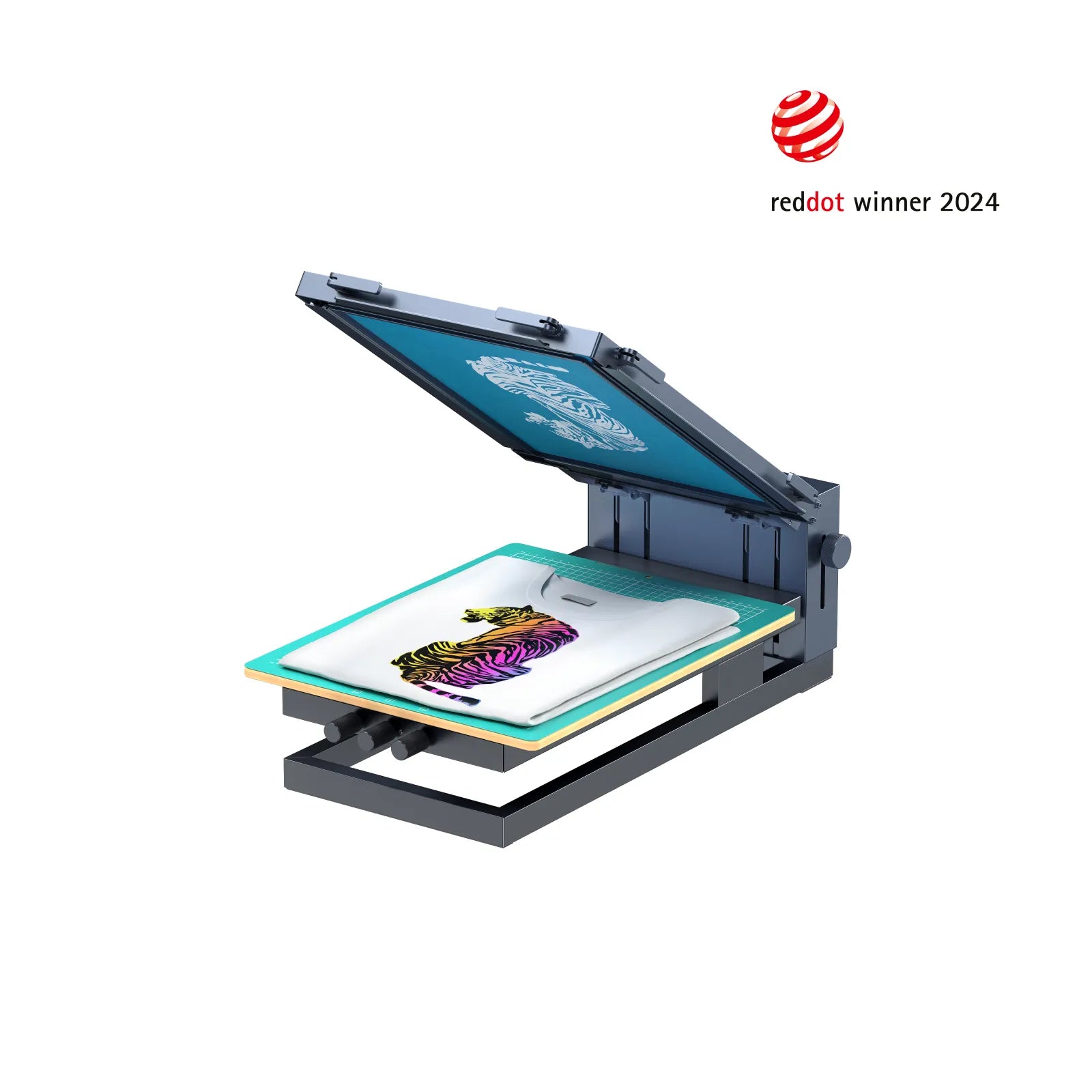ChatGPT said: Why 10:9 Design near me is the trusted solution for local customers
Discover the Numerous Kinds of Screen Printing Techniques for Your Next Job
Screen printing uses a varied series of methods that can improve any type of innovative task. From typical approaches like serigraphy to modern-day technologies such as direct-to-garment printing, each strategy has its distinct advantages. Specialty options, including environment-friendly and metallic inks, introduce a lot more possibilities. Comprehending these strategies can considerably influence the last end result. Nonetheless, the obstacle lies in choosing the most appropriate method for specific demands and wanted impacts. What variables should one consider?

The Essentials of Screen Printing
Although screen printing may seem complicated, it is fundamentally an uncomplicated procedure that includes moving ink with a mesh screen onto numerous surfaces. The technique starts with the development of a pattern, which specifies the layout to be published. This stencil is affixed to a mesh screen, typically made of polyester or nylon. Once the stencil is in place, ink is related to the screen and pushed with the mesh using a squeegee, causing the preferred pattern being published on the underlying material.
Screen printing can be performed on a large array of substratums, consisting of textile, paper, and plastic, making it a versatile choice for numerous tasks. The procedure permits vibrant shades and detailed designs, making it preferred in industries such as advertising, art, and style. Understanding these basics equips individuals with the fundamental understanding required to check out even more advanced techniques in screen printing.
Traditional Screen Printing Techniques
Conventional screen printing techniques have been employed for centuries, preserving the craftsmanship and virtuosity of this approach. This method utilizes a mesh screen to move ink onto a substratum, such as textile or paper, permitting for vibrant and resilient layouts. The process starts with creating a stencil, which obstructs certain areas of the screen to regulate where the ink will certainly be used.
One popular strategy is serigraphy, often utilized for restricted versions and creative prints. Another is using water-based inks, which are environmentally friendly and give a soft feeling on textiles - 10:9 Design contact. Additionally, conventional approaches can consist of hands-on printing, where artisans apply ink with a squeegee, making certain precision and interest to detail
These methods remain valued in the industry for their responsive quality and the one-of-a-kind structures they produce, interesting both developers and customers that appreciate the heritage of screen printing.
Digital Screen Printing Innovations
As the need for faster production and personalization in the printing sector has surged, electronic screen printing technologies have emerged as a game-changer. This technology blends traditional screen printing techniques with digital processes, permitting rapid prototyping and complex layouts that were previously tough to accomplish. One substantial innovation is the introduction of direct-to-garment (DTG) printing, which helps with high-quality, full-color prints on different textiles without the requirement for displays. In addition, innovations in ink solutions have caused environmentally friendly alternatives that keep lively shades while lessening environmental influence. Making use of automated systems further streamlines production, lowering labor prices and boosting precision. These developments not just cater to small set orders and tailored styles however also permit quicker turnaround times, making them perfect for organizations concentrated on conference consumer needs in a hectic market. Digital screen printing, subsequently, represents a vital evolution in the domain of printing techniques.
Specialty Screen Printing Techniques
Discovering specialized screen printing methods discloses a varied array of techniques that press the limits of creative thinking and performance in the printing industry. Amongst these, glow-in-the-dark inks give a special visual impact, making layouts come alive in low-light conditions. Metal inks, known for their sparkling finish, add a touch of high-end to published products. Another innovative approach is discharge printing, which gets rid of dye from the textile rather than adding ink, leading to a soft, classic feel. High-density printing creates an elevated structure on the surface, improving responsive involvement. In addition, water-based inks are obtaining appeal for their vibrant shades and lowered environmental impact. Each of these specialized techniques deals with particular layout requirements, making it possible for artists and brand names to develop standout items that reverberate with their audiences. By leveraging these techniques, organizations can boost their screen printing jobs to brand-new elevations, making certain remarkable perceptions.
Eco-Friendly Screen Printing Options
Eco-friendly screen printing alternatives are gaining grip as the sector changes towards sustainability. Sustainable ink selections and making use of eco-friendly materials are vital parts in decreasing the environmental influence of the printing process. By taking on these practices, screen printers can add to an extra sustainable future while preserving top quality outcomes.
Sustainable Ink Selections

Biodegradable Materials Usage
As the screen printing market evolves, the consolidation of biodegradable materials is coming to be increasingly crucial for environmentally conscious practices. Producers and developers are now discovering inks and substrates made from natural, renewable resources that decay extra effectively than conventional counterparts. These biodegradable options decrease plastic waste and decrease ecological impact, aligning with the expanding demand for lasting products.
Usual examples consist of water-based inks and organic cotton textiles, both of which minimize harmful chemicals and promote eco-friendliness. Brand names that take on these products usually improve their market appeal, attracting customers who focus on sustainability. As awareness of environmental concerns continues to climb, the shift in the direction of naturally degradable products in screen printing is likely to acquire energy, fostering a greener sector requirement.
Selecting the Right Technique for Your Job
How can one identify the most appropriate screen printing strategy for a details task? The decision rests on several factors, consisting of the material to be printed on, the intricacy of the layout, and the wanted manufacturing quantity - 10:9 Design Company. As an example, direct-to-garment printing is suitable for complex layouts with numerous colors, while standard screen printing stands out for bigger runs of easier graphics
In addition, factor to consider of the end-use of the printed thing is important. For outside applications, methods that provide sturdiness and weather resistance, such as plastisol ink, might be liked. Alternatively, environmentally-conscious projects may take advantage of water-based inks or naturally degradable materials.
Inevitably, comprehending the job's one-of-a-kind demands enables an enlightened option, ensuring both aesthetic charm and practical longevity. By examining design complexity, product compatibility, and production scale, one can effectively select one of the most ideal screen printing technique to satisfy their get more info project's goals.
Often Asked Questions
What Is the History of Screen Printing?
Screen printing stemmed in ancient China around 1000 AD, evolving through Japan and Europe. By the 20th century, it ended up being preferred in commercial art and style, revolutionizing how styles were produced and distributed around the world.

Exactly how Do I Prepare Art Work for Screen Printing?
To prepare artwork for screen printing, one need to assure high resolution, use a suitable color mode, develop different layers for each color, and convert message to details, ensuring compatibility with the printing procedure and desired result.
What Materials Are Ideal for Screen Printing?
The ideal materials for screen printing consist of high-grade inks, durable displays, and suitable substrates like cotton, polyester, or blends. Furthermore, utilizing ideal emulsion and mops can improve the printing procedure and results.
Can I Evaluate Publish in your home?
Yes, screen printing in the house is possible. With the right materials, arrangement, and techniques, individuals can create premium prints. Nonetheless, careful factor to consider of work space and tools is important for successful outcomes.

What Are Common Blunders in Screen Printing?
Common mistakes in screen printing consist of incorrect exposure times, poor ink uniformity, imbalance of displays, not enough cleansing of products, and neglecting to examine prints. These mistakes can endanger the high quality and accuracy of the final product.
Screen printing might appear complicated, it is essentially a straightforward process that entails moving ink through a mesh screen onto various surface areas. As the need for faster manufacturing and modification in the printing market has risen, electronic screen printing technologies have emerged as a game-changer. Checking out specialty screen printing approaches reveals a varied array of techniques that press the boundaries of imagination and functionality in the printing industry. The ideal products for screen printing include premium inks, resilient screens, and ideal substratums like cotton, polyester, or blends (10:9 Design Company). Typical mistakes in screen printing consist of improper exposure times, poor ink consistency, imbalance of screens, insufficient cleaning of products, and disregarding to examine prints